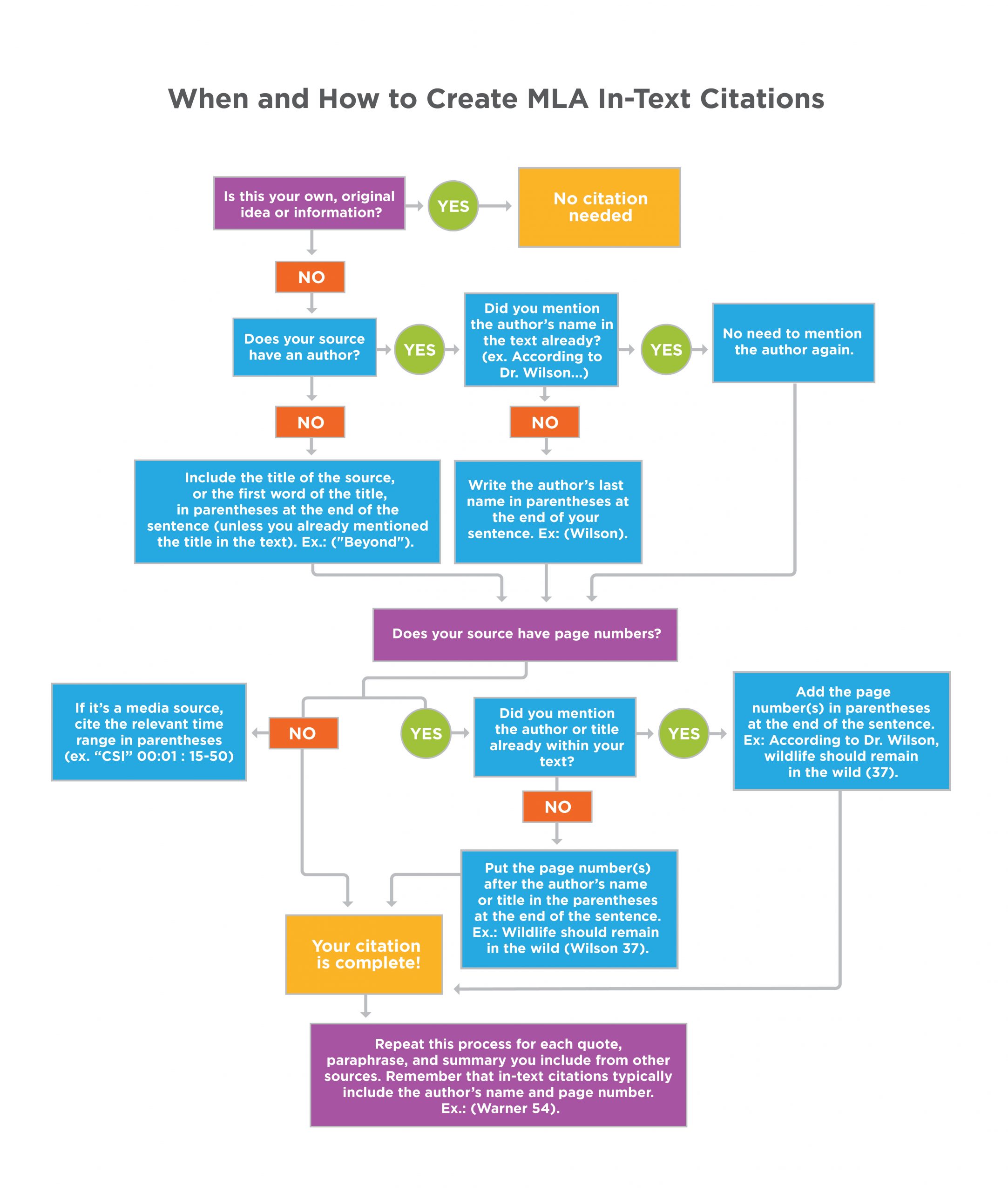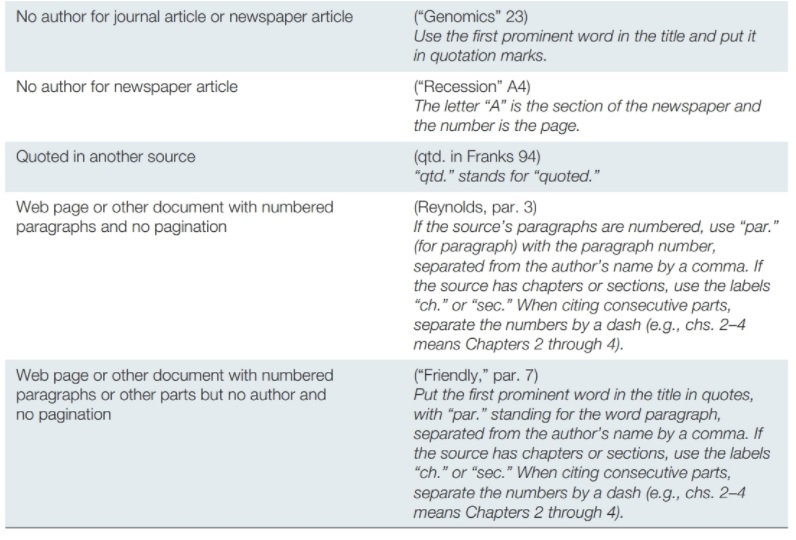33
By the end of this chapter, you will be able to:
- Use MLA parenthetical citations. (GEO 2; SLO 2)
When you use the words or ideas of another person in your paper, you must document the source within the text of the paper as well as on the Works Cited page. Whether you quote or paraphrase the source, you must include an in-text citation that:
1) Clearly points to the source on the Works Cited page.
2) Identifies the location of the borrowed information.
Definition
Referring to the works of others in your own essay is done through In-Text Citations. MLA Style uses a type of in-text citations known as Parenthetical References, because they are a reference to the source’s bibliographical citation that appears in parentheses at the end of a sentence.
Author-Page Style
MLA follows the author-page style of formatting. This is pretty simple. First, type the author’s last name. Then type the page number from which you are quoting or paraphrasing. Next, put them together (with a space in between) in a little parenthesis sandwich at the end of your sentence. The period goes after the parenthetical reference. Think of the period as a door shutting all the info that goes together into its own room.
Example
This tells readers that this quote comes from page 2 of a work written by an author with the last name of “White”. If the reader wants more information, they can flip to the Works Cited page and find “White”.

Exceptions to the Author-Page Style Rule
1. More Than One Author: If a source has two or three authors, include each of their last names in the order they appear in the bibliographical citation.
Example: (Smith, Green, and White 55).
2. Four or More Authors: Just write the first author’s last name and “et al.”, which means “and others.”
Example: (Smith et al. 55)
3. Corporate Author: Use the name of the organization instead of the author’s last name. You may use an acronym, if an organization has one, or abbreviations.
Examples: (U.S. Dept. of Labor 33), (HBO 11)
4. No Author(s): Write the title of the work, or a shortened version of it, instead. Remember to use quotation marks or italics.
Examples: (“The Basics of Chaos Theory”), (The Matrix)
5. No Page Number(s): Don’t include any – just skip it and move on!
6. Multiple Works by the Same Author: If you have more than one citation on your Works Cited by the same author, put the author’s last name and the first word of the title (disregarding a, an, and the) divided by a comma.
Examples: (Austen, Emma 29), (Austen, Persuasion 135), (Austen, Mansfield Park 12)
7. Multiple Sources in One Sentence: If you use more than one source in the same sentence, put both sources in the same parenthetical reference, separated by a semicolon. Put the source with the information you used first in the sentence first in the parenthetical reference.
Examples: (Gregory 39; Sheffield 29), (“Minefield” 32; A Brief History of Time 344), (Dystopia 383; Clark and Lewis 82)


In MLA Style, the bibliography (list of sources used) is referred to as the Works Cited page.
The brief form of a source reference that included the text of an essay.
A citation style in which partial citations that reference a bibliographical citation are enclosed within parentheses and embedded in the text, either within or after a sentence.
